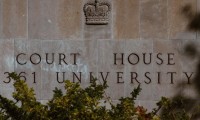This past year, Toronto has had a winter unlike any other in our recent memory. With constant buildup of snow and ice, it is important to remember that property owners and tenants (or “occupiers”) have a responsibility to ensure that pedestrians are safe when traversing their property. While a pedestrian has the obligation to take reasonable care when walking, they should also not be subjected to unexpected hazards. Potentially dangerous conditions could include:
- Ice/snow that has not been cleared
- Slippery floors (spills, wet floors)
- Inadequate lighting conditions
- Missing handrails
- Holes, gaps or cracks in flooring
- Sudden changes in elevation (unexpected bumps, curbs, potholes)
If someone slips or trips, an occupier may be held liable if the individual or company failed to take reasonable care in the circumstances to ensure that the premises are reasonably safe and free of obstacles. An injured pedestrian has a right to sue for pain and suffering, medical expenses, income loss as well as other expenses because of harm suffered as a result of the negligence of another party. For example, if a person is forced to miss a few weeks of work due to a broken leg from falling because a store owner failed to clear a patch of ice by their entrance, the individual can sue for their lost income, expenses incurred as a result of the accident, as well as compensation for their suffering.
The Law
Any person or company that has control over the land or premises has duties under the Occupier’s Liability Act. An occupier is required to take reasonable care to ensure that persons entering the premises are reasonably safe. Of course, the question then becomes “what is reasonable care?”
A non-exhaustive list of criteria includes:
- Whether the danger was foreseeable
- Example: It is conceivable that a narrow, dimly lit staircase could pose a hazard
- Whether the occupier acted in accordance with reasonably acceptable standards of practice
- Example: An occupier might not be expected to clear his premises of snow and ice every half an hour, but is waiting a week after an ice storm acceptable? Most likely not.
- Whether a system of maintenance and inspection existed
- Example: Was there staff in charge of ensuring premises are safe and are there logbooks?
- Whether or not employees were adequately trained in identifying and eliminating hazards
- Example: Is there a health and safety manual or policy in place and are employees aware of this and trained on what to do in case of an emergency?
- Whether a hazard was permitted to exist for an extended period of time
- Example: Was the occupier notified of a potential hazard yet did nothing to eliminate it?
While most property owners have liability coverage in their insurance policies to cover potential injury claims, it is prudent to ensure that your coverage is sufficient.
For a person who has been injured, a lawyer specializing in slip & fall cases will look into the circumstances of the accident and investigate the issue of liability. For example, factors that could be relevant to a slip & fall accident on a wet staircase could include whether anything was done to prevent the stairs from being slippery (any non-slip floor treatment), whether there was adequate lighting, whether there was a breach of the building code and whether there was a system of inspection. A personal injury lawyer will build the case by retaining experts, getting medical reports and conducting on-site investigations to ultimately achieve success for the injured person.
By: Simmy Yu



